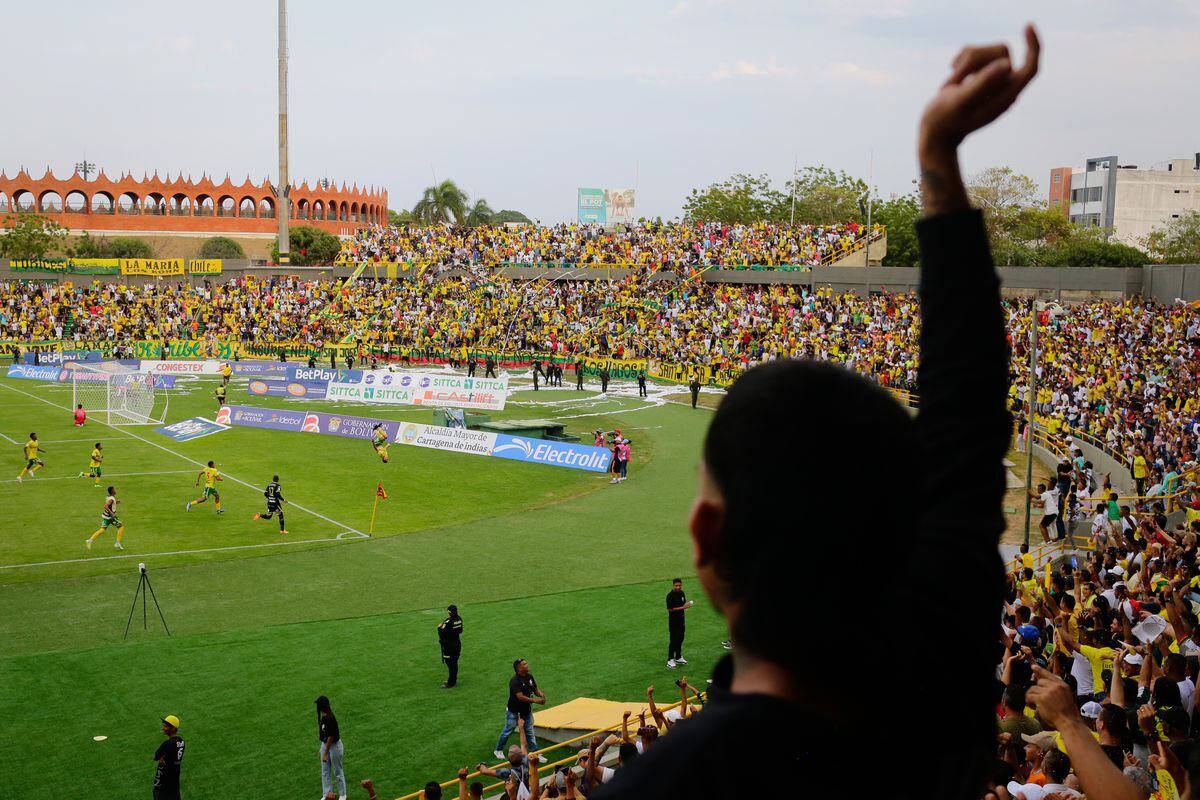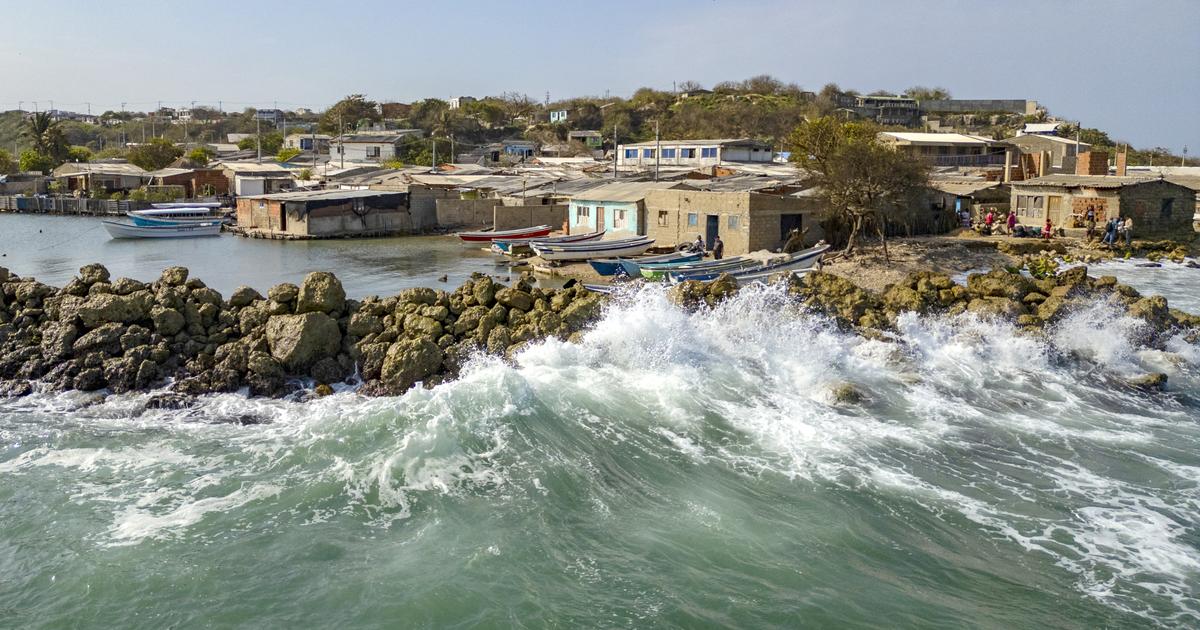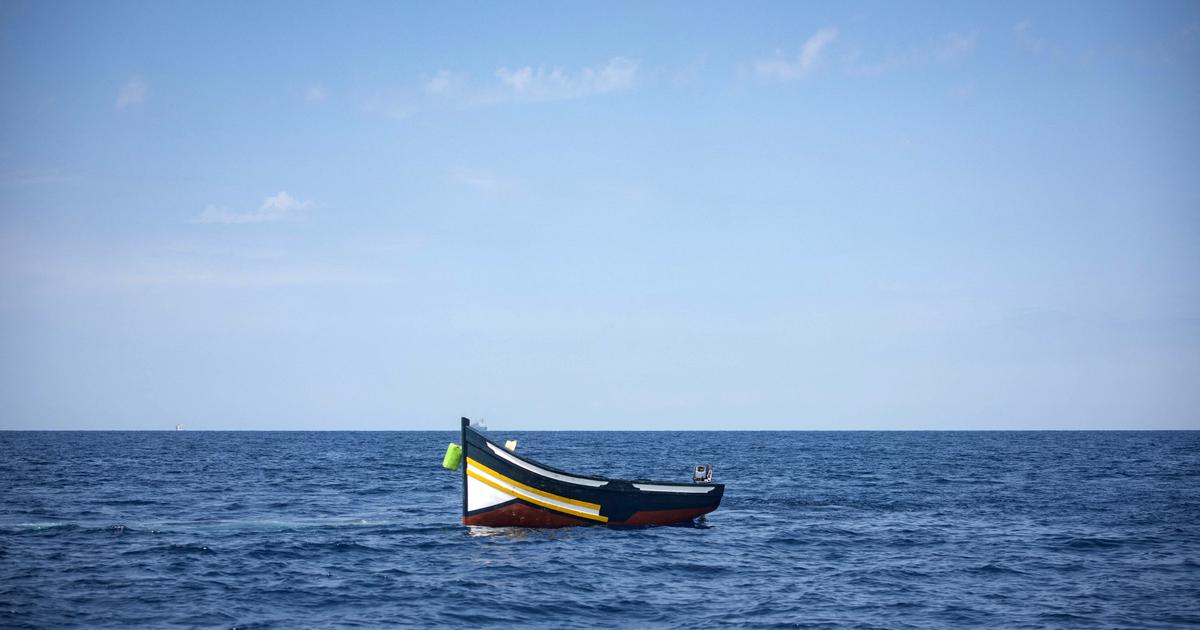- Click to share on Facebook (Opens in a new window)
- Click to share on Twitter (Opens in a new window)
- Click here to share on LinkedIn (Opens in a new window)
- Click to email a friend (Opens in a new window)
(CNN) - Cartagena, located on the Caribbean coast of Colombia, is fast becoming a must-see, especially for Americans and Canadians who enjoy new and convenient flight routes.
View of the streets of the walled city, in Cartagena.
MIRA: Cartagena could cease to be a Unesco Heritage for this building
Once associated primarily with gangs and drugs, it is said that Colombia is now a massive tourist destination. Tourism has more than tripled from one million foreign visitors per year in 2006 to 3.1 million in 2018, according to data from the official national tourism board.
While Cartagena may not be the capital (which is Bogotá) or the title of a Madonna song (Medellin, hello), its mix of informal charm next to the beach and urban vitality make it a fun and fascinating place to explore. The city center and its fortifications are also a UNESCO World Heritage Site, so you can enjoy its history and the sun.
Cartagena, with its walled city, is the most tourist city in Colombia and the one that receives more foreign visitors.
The basics
Cartagena, like so many places in Latin America, is named after a city in Spain. Therefore, Cartagena, Colombia, is often called by its full name, "Cartagena de Indias," or Cartagena de las Indias. The premises are known as cartageneros (or cartageneras, in the feminine plural).
The historic center of Cartagena is located within the old city walls built by the Spaniards between the 16th and 18th centuries. It is called Walled City and it is where most of the hotels and restaurants are located and, in addition, it is very friendly for walking.
(LUIS ACOSTA / AFP / Getty Images).
READ: The struggle to eliminate discrimination and racism in the streets of Cartagena
If you only have a few days, you better stay there. And if you are planning a longer trip, spend the first days in the walled city to orient yourself before venturing further.
The famous Clock Tower is often used to delimit the boundary of the walled city, because it is above the Main Gate of the Old City. Once you are south of there, you will find yourself in the colorful working-class neighborhood of Gethsemane.
Gethsemane is the place to go to street art, less expensive restaurants and a vibrant community life.
The narrow strip of land southeast of the walled city is Boca Grande. That's where you'll find many of the luxury hotels and all-inclusive resorts.
Now that you are established, it is time to eat, dance and drink.
The most outstanding
Many of Cartagena's biggest attractions are quite close to each other.
You will notice quite quickly, especially if you look at the postcards of the city, that many of Cartagena's most famous buildings are bright yellow. The Clock Tower is one of them.
MIRA: Sex, drugs and vallenato? Cartagena, on alert for a private party that would promote “sex tourism”
In addition to being a great example of where to see the old city walls, the spectacular presence of the Clock Tower skyline makes it a tool to easily explore the place.
The narrow street in front of the Tower is known as The Portal of Sweets.
(Dean Treml / Red Bull via Getty Images).
Here, vendors, mainly women, who put wooden signs with their names on top of their stalls, ride cars that sell local favorite cookies, such as coconut and panela cookies (similar to brown sugar), guava and sweet jellies of milk in the form of coins, hearts or babies.
Most of these come wrapped, which makes them easy and fun memories or gifts to take with your loved ones at home, and you can usually give them a taste.
(Raúl Arboleda / AFP / Getty Images)
Art and architecture
Even if you can't see a show, the beautiful Teatro Adolfo Mejía (also known as Teatro Heredia), pastel color, is generally open to explore.
Built on the ruins of a church, this magnificent building now serves as a temple for the arts: inside, you must look for a large fresco of the nine muses on the ceiling, painted by Colombian artist Enrique Grau.
(Luisa Acosta / AFP / Getty Images)
READ: The messes of 'Madame', the woman accused of being the biggest pimp in Cartagena
Nearby, you can also see the old house of the man who is possibly the most famous son of Cartagena, the late Nobel Prize for literature Gabriel García Márquez.
Márquez's iconic novel "Love in the time of cholera" is set in a slightly fictional Cartagena, and there is a quote from Márquez painted on the side of his old house.
As it is still a private residence, you cannot enter. The mural is on the side of the building on Calle 7, next to the Makondo Hotel (whose name comes from the city where "One Hundred Years of Solitude" in Marquez) takes place.
View this post on Instagram
Good morning from Cartagena #cartagena # colombia🇨🇴
A post shared by Lilit Marcus (@lilitgoes) on Jul 23, 2019 at 6:41 am PDT
Many of the most beautiful buildings in Cartagena are churches. One of the most notable, with a dramatic stone front, is the church of San Pedro Claver.
(Luis Acosta / AFP / Getty Images)
Originally a church built by Spanish Jesuits in the 17th century, it was renamed Pedro Claver, who was canonized in 1888. Claver was known for providing medical care and food to enslaved Africans who were brought to Colombia.
Now he is the patron saint of Colombia and of the enslaved people, and the church here has a museum dedicated to his life and works.
LOOK: Five things that make Cartagena unique
Around the corner of the church is the Museum of Modern Art of Cartagena. This small, carefully curated, two-story museum focuses on the work of Colombian and Latin American artists and has information in Spanish and English.
Adolfo Mejía Theater, La Merced Street. Carrera 10 Centro, Cartagena. Tel .: +57 5 6646023
Gabriel García Márquez House, Zerrezuela Street, Cartagena.
San Pedro Claver Church, San Pedro Claver Square, Carrera 4 # 30-01, Cartagena.
Museum of Modern Art of Cartagena, Cale 31 # 69, Cartagena, Cartagena. Tel .: +57 5 6645815.
Food and drink
Despite its small size, the walled city is packed with everything from street food that people wait in lines for half an hour to buy, as well as fancy restaurants.
Many of the locals' favorites, such as arepas with eggs (egg, ground meat and cheese inside a corn arepa), are fried, which does not always make them the first choice on a scorching day.
Another option: the Peruvian influence of Colombia, combined with Cartagena's proximity to the sea, means that there is much (and excellent) ceviche.
While La Cevichería deserves a lot of press (even here on CNN Travel), it often has long waits and can be expensive. If you do not want to queue, go to Cebiches & Seviches, which is located through a door, next to the Portal of Sweets, which flickers and through which you will get lost.
READ: The charms of Cartagena's architecture
There, you can't go wrong with the sea bass (sea bass) prepared in a simple but delicious way, with fresh avocado and roasted corn. The classic tiger milk with lemon juice, fish broth and coriander is also a great option.
Colombia also hosts a large number of tropical fruits, some of which are difficult to find outside the country.
A great place to try them is the small and adorable La Palettería, home of lollipops made with lulo (a citrus fruit), passion fruit (a sour fruit) or corozo (a reddish berry similar to a blueberry, but sweeter). There are also more traditional flavors of ice cream like vanilla and chocolate, if you feel like choosing a more American classic.
To take a break from walking, there is no better place to spend an afternoon than at Ábaco, a bookstore and cafeteria where pocket books are stacked up to the ceiling. There is table service, a robust coffee menu (after all, this is Colombia) and free Wi-Fi, which makes it the perfect place to charge your phone and rest.
Cartagena is legendary for its nightlife. Head to El Barón, across the square from San Pedro Claver, to enjoy small dishes and amazing rum-based cocktails, and request an outdoor seat to enjoy the action.
You can try some of Colombia's small but growing craft beer products at The Beer Lovers: look for brands like 3 Cordilleras, Bogotá Beer Company and Chelarte (which gives its beers names of women like Raquel and Zenaida).
Just for the kitsch factor, it is worth stopping at the KGB Bar, which is full of Soviet-era medals, cosmonaut uniforms and other souvenirs. If you ask kindly, they will let you wear a Russian military hat while you drink.
Cebiches & Seviches, Carrera 7 # 32-25 Cartagena. Tel: +57 5 6797671.
La Palettería, Calle 35 # 03-86, Cartagena. Tel .: +57 5 6661579.
Abaco Books and Coffee, Calle 36 # 3-86, Cartagena. Tel .: + 57 5 6786143.
El Barón, Carrera 4 # 31-7, Cartagena. Tel .: +57 5 6643105.
The Beer Lovers, Gastelbondo Street and Factoría Street, Cartagena. Tel .: +57 5 6642202.
KGB Bar, Carrera 7 # 38-152, Cartagena.
Getting to know Gethsemane
If the walled city is Cartagena for beginners, Gethsemane is the next step. It has a youthful and lively feeling without street vendors who speak English in every corner.
An option to start in the neighborhood is a gastronomic or street art tour from Cartagena Connections, which maintains small groups and is locally owned.
There is no better place to immerse yourself in the neighborhood than Café del Mural, a cafe on a street full of colorful murals, hence its name. In addition to coffee (if you want more information, they will organize an informal tasting), there are many fresh fruit juices, herbal teas and cakes.
It has Wi-Fi and is a good place to catch up on work emails, as long as you can do it after 3 pm, when they open (take this as an excuse to disconnect).
Two excellent places to have lunch are Oh La La, a French restaurant that incorporates Caribbean flavors, and Caffé Lunático, which rotates fresh fish and fruit juices according to availability. Oh La La also offers cooking classes in Spanish and English.
No matter where you stay, the best time to visit Gethsemane is at night, when the neighborhood is illuminated.
Go to dinner on the rooftop of Malagana, where the food, namely the best fish tacos in the city, is complemented by the views of the city and the cool breeze.
Demented, right next to the Plaza de Trinidad, in the heart of the neighborhood, has pizzas, small plates (do not forget to try the meatloaf) and killer cocktails, and they open the retractable roof on nice weather evenings.
View this post on Instagram
A post shared by Malagana Café & Bar, Cartagena (@malaganacafecartagena) on Aug 10, 2019 at 3:41 pm PDT
Trinidad Square is home to nightly entertainment, be it a Zumba community class or a performance by traditional dancers known as "Palenqueros", as well as food carts and vendors selling ice cold canned water and beer in styrofoam boxes. You will also see vendors selling mixed juice, some of which are made in bicycles operated by bicycle or solar energy.
For just a few dollars, you can eat, take a seat and enjoy the show that is Cartagena.
Café del Mural, Calle de San Juan # 29100, Cartagena. Tel .: +57 5 6472912
Oh La La, Calle 25 # 8B-300, Cartagena. Tel .: +57 5 6644321
Lunatic Caffé, Espiritu Santo Street # 29-184, Cartagena. Tel .: +57 5 6601735
Malagana, Calle tripita and Media # 31-55, Cartagena. Tel .: +57 5 6601360
Demented, Carrera 10 # 29-29, Cartagena. Tel .: +57 5 6604226
Go further
While the center of the city of Cartagena has many things, it has a fault in one department: the beach. Fortunately, many nearby resorts will allow you to book day passes or excursions and, in some cases, will include food and drinks to sweeten the deal.
Most also offer the use of beach chairs and umbrellas, but you may need to bring your own towels if you are not staying at the property.
An excellent option is the Conrad, conveniently located halfway between the airport and the walled city. It is also a good option to spend the night if you have an early flight and want to avoid traffic or get some sleep the next morning.
For about $ 45, you can use any of the resort's pools, and lunch or dinner is highly recommended at the excellent Biblioteka restaurant, decorated like a library.
Another option is the sophisticated and elegant Blue Apple Beach House, located on Tierra Bomba Island, just southwest of Cartagena. To get there, you must take a taxi to the main ferry terminal and board the private boat of the complex: transportation to and from the island is included in the daily rate of 90,000 pesos.
One of the city's most famous historical attractions is the Castillo de San Felipe de Barajas, a fortress built by the Spanish in the 16th and 17th centuries. The UNESCO World Heritage designation was partly thanks to him and the old city walls. The Castle is in excellent condition and has been well maintained, especially the spectacular entrance overlooking the water.
View this post on Instagram
💫 We invite you to see the sunsets in Conrad Cartagena 💫 Because, although it seems impossible, in our Beach Club the colors look much more intense. Let us share Conrad Cartagena's sunsets with you 💫 You may think we're crazy, but we swear sunsets at our Beach Club have more intense and beautiful colors. Come and check them out! . . . . . . #cartagenacolombia #conradhotels #vacations #conradcartagena #luxuryhotel #resorts #caribbeansea #privatebeach #relaxtime #conradeshilton #instagood #hotelview #ciudadamurallada #traveltocolombia #clubdeplaya #playa
A post shared by Conrad Cartagena by Hilton (@conradcartagena) on Aug 19, 2019 at 6:00 pm PDT
It should be noted that the neighborhood around the fort is not the safest, and many Cartagena would not go alone. Your best option is to take a taxi to the fort and pay the driver to wait and take you back.
To get a truly Colombian experience, it is worth visiting the Bazurto market, about 4 km (3 miles) from Cartagena.
Castillo San Felipe de Barajas in Cartagena, the largest colonial fort in Colombia, declared a World Heritage Site in 1984. (Credit: MANDEL NGAN / AFP / Getty Images)
It is colorful, chaotic, loud and exciting, as is the city itself. In an hour you can buy a blanket or a hand-woven basket, see how a fish is gutted and drink a beer with a veteran while listening to their stories about what the country was like.
The selection of fruits, products, meat, cheese and chocolate is exceptional, but the market can be difficult to visit for anyone who does not master Spanish. It is also huge and difficult to navigate, which can be fun or scary depending on the mood you are in that day. In addition, it is a hotbed known to pickpockets that take advantage of crowded crowds and narrow aisles.
The best way to experience the market is to accompany a local. There are several Airbnb experiences that include guided tours of the local market and a homemade meal prepared with what you bought that day. In addition to being a safer way to experience the market, it also gives you the opportunity to meet a local and learn what life is like for most of Cartagena.
Conrad Cartagena, Ring Road, kilometer 12, between Manzanillo del Mar via Punta Canoa, Cartagena. Tel .: +57 5 6517220
Blue Apple Beach House, Mamón Beach # 1, Bocachica, Tierra Bomba Island, Cartagena. Tel .: +57 316 7506979
San Felipe Barajas Castle, Carrera 17, Cartagena. Tel .: +57 5 6421293
Mercado Bazurto, Carrera 29 # 36-07, Cartagena.
Cartagena Patrimony of Humanity








